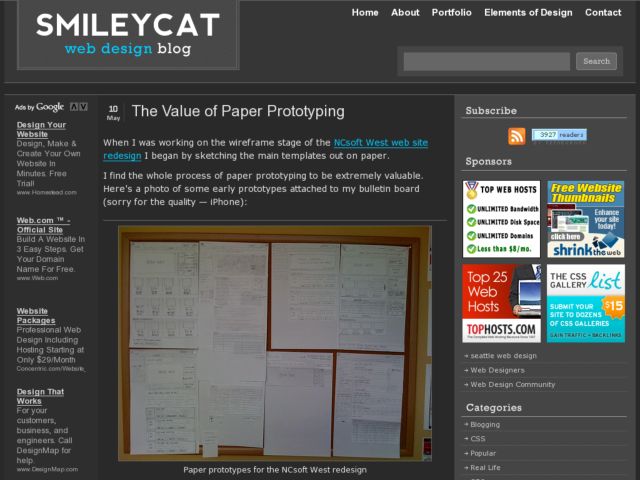Christian Watson discusses how he uses paper prototypes, showing a photo of a recent project he worked on.
Rather than sketch the whole page on a sheet of paper, I prefer to draw out the various components of the page, cut them out, and Blu-Tack them to the paper. This makes it easy to change different elements, switch them around, etc, without having to redraw the whole page each time.
Sketching out and adding individual components in this way enabled me to quickly come up with a general template layout. I then went back to particular features about which I had more concrete ideas and drew them out in more detail.
...
Another really helpful feature of paper prototypes — as long as you have them visibly attached to your wall — is that you get to look at them every day. I found this to be invaluable for letting the wireframe 'sink in' so that I could view it and review it multiple times a day and make sure that I was happy with it.
Can't agree more about the benefit of having them taped up to the walls too look at every day. I do this with everything and it helps to see things out of the corner of my eye, or from a distance with some regularity. It's a way of "living with" ideas, in order to assess their usefulness over time.
While I was reading this, I ended up searching for photos of my own paper prototypes and found this photo I took of a paper prototype I worked on a few years ago. I remember also enjoying the act of taping vellum modules to pages and moving them around with teams and test participants. I think it also feels more fun and participative working with disposable ideas that way.
